There are growing concerns about the potential hazards certain types of light pose to our eyes. Long-term exposure to certain wavelengths of light can increase the risk of eye diseases. Which types of light are considered healthier due to their color temperature? In this article, we delve into the debate between warm white and cool white lights and their impact on eye health.
Table of Contents
ToggleUnderstanding Warm White Light
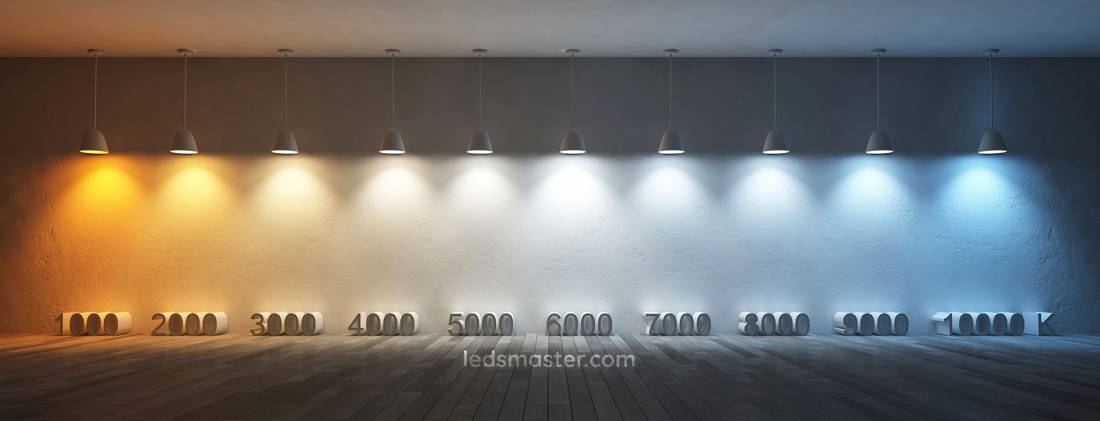
What exactly is a warm white light bulb? Standard incandescent bulbs emit a warm orange-yellow glow, mimicking the color temperature of sunlight. These bulbs, with their filament technology, vary in brightness depending on the wattage used. Warm white LED bulbs have been developed to replicate this color temperature, typically falling within the range of 2000-3000K on the Kelvin chart.
Benefits and Applications of Warm White Light
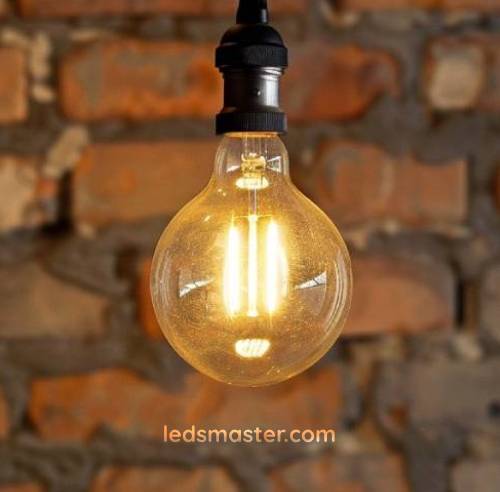 Warm white light is renowned not only for its ability to create a cozy ambiance within residential spaces but also for its remarkable capacity to enhance the aesthetics of interior décor. With its soft and inviting glow, warm white light envelops rooms in a comforting embrace, making it an indispensable element in the creation of a welcoming atmosphere within homes.
Warm white light is renowned not only for its ability to create a cozy ambiance within residential spaces but also for its remarkable capacity to enhance the aesthetics of interior décor. With its soft and inviting glow, warm white light envelops rooms in a comforting embrace, making it an indispensable element in the creation of a welcoming atmosphere within homes.
The gentle radiance of warm white light serves as a catalyst for relaxation and tranquility, inviting inhabitants and guests alike to unwind and indulge in moments of serenity. Whether illuminating living areas, bedrooms, or dining spaces, warm white light fosters a sense of intimacy and contentment, making it the preferred choice for creating a homey ambiance that exudes warmth and hospitality.
Moreover, beyond its innate ability to cultivate a cozy environment, warm white light plays a pivotal role in accentuating the aesthetic appeal of interior décor. Its subtle yet captivating glow has the transformative power to elevate the visual impact of decorative elements, furnishings, and architectural features, infusing rooms with a timeless charm and sophistication.
Exploring Cool White Light
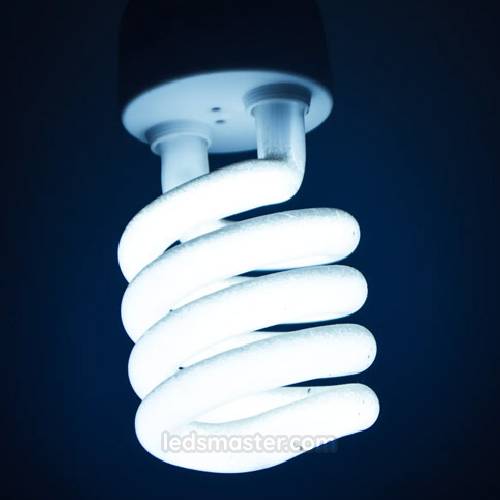 Cool white light, positioned on the opposite end of the spectrum from warm white light, presents an illuminating contrast characterized by its crispness and brightness, accompanied by a subtle blue hue. Typically falling within the range of 3500 to 5000 Kelvin on the Kelvin chart, cool white lighting is favored for its ability to provide optimal visibility and clarity, making it an ideal choice for task-oriented environments.
Cool white light, positioned on the opposite end of the spectrum from warm white light, presents an illuminating contrast characterized by its crispness and brightness, accompanied by a subtle blue hue. Typically falling within the range of 3500 to 5000 Kelvin on the Kelvin chart, cool white lighting is favored for its ability to provide optimal visibility and clarity, making it an ideal choice for task-oriented environments.
In settings such as hospitals and offices, where precision and focus are paramount, cool white lighting finds widespread application. Its luminous quality enhances visual acuity, facilitating tasks that demand attention to detail and accuracy. Within medical facilities, for instance, cool white lighting aids healthcare professionals in performing intricate procedures with precision, ensuring optimal patient care and safety. Similarly, in office spaces, the bright and invigorating ambiance created by cool white lighting fosters productivity and concentration among employees, contributing to a conducive work environment.
Why is Warm White Light Considered Ideal for Reading?
The color temperature of warm white light closely resembles the soft glow of traditional incandescent bulbs or candlelight. This gentle warmth provides a comfortable contrast against white paper, making text easier to read without causing eye strain.
By reducing glare and harsh reflections, warm white light minimizes discomfort during extended reading sessions. Unlike cooler-toned lights, which can create distracting glares on glossy pages or screens, warm white light creates a soft, diffused illumination that is easy on the eyes.
Besides, the soothing ambiance created by warm white light promotes relaxation and concentration, enhancing the overall enjoyment of the reading experience. Its inviting glow evokes the cozy atmosphere of a well-lit library or a comfortable reading nook, making it particularly suitable for bedtime reading or quiet evenings at home.
Understanding the Impact of Blue Light on Retinas
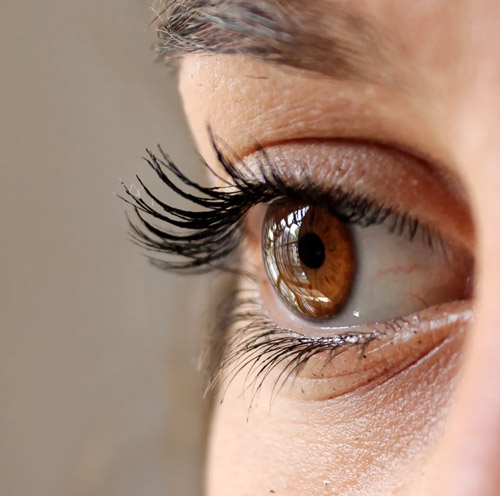 In today’s digital age, where our lives are increasingly intertwined with electronic devices such as computers, smartphones, tablets, and TVs, we find ourselves constantly immersed in a sea of artificial light. Among the various wavelengths emitted by these devices, blue light has garnered significant attention due to its potential impact on eye health and overall well-being. While blue light exposure may not pose an immediate threat, accumulating evidence suggests that prolonged and excessive exposure can have adverse effects on our eyes and overall health.
In today’s digital age, where our lives are increasingly intertwined with electronic devices such as computers, smartphones, tablets, and TVs, we find ourselves constantly immersed in a sea of artificial light. Among the various wavelengths emitted by these devices, blue light has garnered significant attention due to its potential impact on eye health and overall well-being. While blue light exposure may not pose an immediate threat, accumulating evidence suggests that prolonged and excessive exposure can have adverse effects on our eyes and overall health.
Blue light, with its short wavelength and high energy, is known to penetrate deeply into the eye, reaching the retina and potentially causing damage to light-sensitive cells over time. The retina, located at the back of the eye, plays a crucial role in visual perception, converting light into electrical signals that are transmitted to the brain. However, prolonged exposure to blue light, particularly in the absence of adequate protective measures, can lead to oxidative stress and inflammation in the retinal cells, contributing to the development of various eye conditions.
Symptoms of excessive blue light exposure may manifest gradually and include eye strain, dry eyes, headaches, and difficulty focusing, especially after prolonged periods of screen time. While these symptoms may initially seem mild and temporary, they can escalate into more serious conditions if left unaddressed. Chronic blue light exposure has been linked to an increased risk of age-related macular degeneration (AMD), a leading cause of vision loss among older adults, as well as other ocular conditions such as cataracts and retinal damage.
The concern over blue light exposure is further compounded by the prevalence of cool white lighting in modern indoor environments. Cool white LED lights, commonly used in offices, schools, and commercial spaces, emit higher levels of blue light compared to traditional incandescent or warm white LED lights. Prolonged exposure to cool white lighting, especially in settings where individuals spend extended periods of time, can significantly contribute to overall blue light exposure and its associated risks to eye health.
Debunking Myths About Cool White Light
It’s a common misconception that LED bulbs, even those emitting cool white light, emit UV radiation. In reality, they don’t. Surprisingly, fluorescent lighting actually poses a higher risk to eye health compared to LED light. Although cool white light may have a bluish tint, it’s generally deemed safe for the eyes. Worries about potential retinal damage from LED bulbs often arise from issues like flicker, especially in lower-quality, cheaper bulbs. So, while LED bulbs may have their considerations, UV radiation isn’t one of them.
LED Bulbs and UV Radiation
LED bulbs are renowned for their energy efficiency and versatility, but one misconception is that they emit UV radiation. This belief likely stems from the association of UV radiation with other light sources like sunlight or traditional incandescent bulbs. However, LED technology operates differently. Unlike fluorescent or incandescent bulbs, which may emit some UV radiation, LEDs are designed to convert electricity into visible light without producing UV rays. This makes them safer for prolonged exposure indoors, where UV radiation can potentially harm the skin and eyes.
Comparative Risk with Fluorescent Lighting
Contrary to popular belief, fluorescent lighting poses a higher risk to eye health compared to LED light. Fluorescent bulbs contain mercury vapor, which emits ultraviolet light when excited. While this UV light is typically converted into visible light by a phosphor coating inside the bulb, some UV radiation can still escape. Prolonged exposure to this radiation can contribute to eye strain, fatigue, and even long-term damage to the eyes. LED bulbs, on the other hand, do not contain mercury and emit negligible UV radiation, making them a safer option for indoor lighting.
Safety of Cool White LED Light
LED bulbs come in various color temperatures, ranging from warm white to cool white. Cool white light, often associated with a bluish tint, is frequently used in offices, schools, and other commercial settings. Despite its bluish hue, cool white LED light is generally considered safe for the eyes. The concern about blue light primarily revolves around its potential impact on circadian rhythms and sleep patterns rather than direct harm to the eyes.
Flicker and Retinal Damage Concerns
While LED bulbs themselves do not emit harmful UV radiation, concerns about retinal damage may arise from other factors, such as flicker. Flickering or rapid fluctuations in brightness can strain the eyes and lead to discomfort or headaches, especially in lower-quality or improperly designed LED bulbs. Cheaper bulbs may lack adequate components to regulate current flow, resulting in visible flicker. However, higher-quality LED bulbs typically incorporate features to minimize flicker and ensure stable illumination, reducing the risk of eye strain or discomfort.
Eye Conditions Linked to Lighting
The human eye is highly sensitive to various forms of light, including ultraviolet (UV) radiation emitted by different light sources. In recent years, there has been growing concern about the potential health impacts of exposure to certain types of lighting on eye health. This article explores the link between eye conditions and specific lighting options commonly found in homes and offices.
Eye Conditions Linked to Lighting
Macular Degeneration
Macular degeneration, often referred to as age-related macular degeneration (AMD), stands as one of the foremost causes of vision impairment and blindness, especially among the aging population. This condition affects the macula, a tiny but crucial part of the retina responsible for central vision, allowing us to see fine details and perform tasks such as reading and driving.
The progression of macular degeneration involves the deterioration of the macular tissue, leading to blurred or distorted vision in the central field of view. There are two main types of AMD: dry AMD, characterized by the gradual breakdown of light-sensitive cells in the macula, and wet AMD, marked by abnormal blood vessel growth beneath the macula, which can cause rapid and severe vision loss.
While aging remains the primary risk factor for AMD, emerging research suggests that prolonged exposure to ultraviolet (UV) radiation from artificial light sources may exacerbate the development and progression of this condition. Among these artificial light sources, fluorescent and halogen lights have drawn particular attention due to their emission of UV radiation alongside visible light.
UV radiation, especially in the form of UV-A and UV-B wavelengths, possesses the ability to penetrate ocular tissues and reach the sensitive photoreceptor cells within the macula. Over time, this exposure can trigger cellular damage and oxidative stress, contributing to the degeneration of macular tissue.
Moreover, the macula lacks the protective pigment present in other parts of the retina, making it especially vulnerable to the harmful effects of UV radiation. As a result, individuals regularly exposed to UV-emitting light sources, such as those found in indoor environments illuminated by fluorescent or halogen lights, may face an elevated risk of developing AMD or experiencing a more rapid progression of the condition.
This association underscores the importance of considering not only natural sunlight but also artificial lighting when assessing UV-related risks to eye health. Strategies to mitigate these risks may include the use of UV-blocking coatings on eyeglasses, the installation of UV-filtering window films, and the adoption of LED lighting, which typically emits lower levels of UV radiation compared to fluorescent and halogen alternatives.
Cataracts
Cataracts represent a prevalent and progressive ocular condition characterized by the clouding of the eye’s natural lens, leading to impaired vision and, in severe cases, blindness if left untreated. The lens of the eye plays a crucial role in focusing light onto the retina, enabling clear vision. However, with age and other contributing factors, such as prolonged exposure to ultraviolet (UV) radiation, the proteins within the lens may undergo structural changes, resulting in the formation of opaque areas known as cataracts.
UV radiation, particularly UV-A and UV-B wavelengths, has long been recognized as a significant environmental risk factor for the development and progression of cataracts. While natural sunlight remains a primary source of UV exposure, artificial light sources, including fluorescent and halogen lights commonly used in indoor environments, also contribute to cumulative UV exposure over time.
The mechanism by which UV radiation promotes cataract formation involves the induction of oxidative stress and damage to lens proteins. When exposed to UV radiation, the molecules within the lens can undergo photochemical reactions, generating reactive oxygen species (ROS) and free radicals. These highly reactive molecules can initiate a cascade of cellular damage, including lipid peroxidation, protein cross-linking, and DNA damage, ultimately impairing the normal function and transparency of the lens.
Furthermore, UV-induced oxidative stress disrupts the delicate balance between antioxidant defense mechanisms and pro-oxidant pathways within the lens, leading to the accumulation of oxidative damage over time. This chronic oxidative insult contributes to the aggregation and denaturation of lens proteins, forming the characteristic cloudy deposits associated with cataracts.
The lens’s susceptibility to UV-induced damage is further compounded by age-related changes in its structure and composition, such as decreased antioxidant capacity and diminished repair mechanisms. As a result, individuals with prolonged or cumulative exposure to UV-emitting light sources, such as those found in indoor settings illuminated by fluorescent or halogen lights, may experience an accelerated onset and progression of cataracts compared to those with minimal UV exposure.
Recognizing the role of UV radiation in cataract development underscores the importance of implementing preventive measures to mitigate UV-related risks to eye health. These measures may include wearing UV-protective sunglasses outdoors, utilizing UV-filtering coatings on eyeglasses, and promoting the use of LED lighting, which emits lower levels of UV radiation compared to fluorescent and halogen alternatives.
Pterygium (Surfer’s Eye)
Pterygium, characterized by the abnormal growth of pink, fleshy tissue on the conjunctiva, represents a common ocular condition that can lead to discomfort and visual disturbances if left untreated. While typically non-cancerous, pterygium has the potential to cause significant impairment of vision, particularly if it grows large enough to encroach upon the cornea and obstruct the visual axis.
Historically, excessive ultraviolet (UV) exposure from outdoor activities such as surfing, skiing, and prolonged sun exposure has been closely linked to the development of pterygium. UV radiation, particularly UV-B wavelengths, is known to induce cellular changes in the conjunctival tissue, triggering inflammation, angiogenesis (the formation of new blood vessels), and fibrosis, ultimately leading to the characteristic growth of pterygium.
The association between outdoor UV exposure and pterygium has been well-established, with epidemiological studies consistently demonstrating a higher prevalence of pterygium among individuals engaged in outdoor occupations or recreational activities, especially in regions with high levels of sunlight exposure.
However, emerging research suggests that certain types of indoor lighting, particularly halogen lights, may also contribute to the development and progression of pterygium. Halogen lights emit a bright, white light that closely mimics natural sunlight and, like sunlight, contains UV radiation. Prolonged exposure to indoor environments illuminated by halogen lights may therefore subject the eyes to significant levels of UV radiation, potentially increasing the risk of developing pterygium over time.
The mechanism by which UV radiation promotes pterygium formation involves similar pathways observed in outdoor UV exposure, including inflammation, angiogenesis, and tissue remodeling. Chronic exposure to UV radiation can induce DNA damage and cellular changes in the conjunctival epithelium, triggering the proliferation of fibrovascular tissue and the formation of pterygium.
Indoor environments illuminated by halogen lights may exacerbate the ocular effects of UV radiation due to factors such as proximity to the light source, prolonged exposure duration, and cumulative UV dose. Individuals spending extended periods in indoor settings with halogen lighting, such as offices, classrooms, or retail spaces, may therefore be at increased risk of developing pterygium compared to those with minimal UV exposure.
Does Warm White or Cool White Produce UV Light?
Both warm white and cool white LED lights emit ultraviolet (UV) radiation to varying degrees, typically falling within safe thresholds for indoor applications. However, the level of UV emissions is subject to variation, influenced by factors such as the specific type and quality of the LED bulbs utilized.
Cool white LEDs are often associated with marginally higher levels of UV radiation compared to warm white LEDs. This phenomenon stems from the composition of cool white LEDs, which typically incorporate a greater proportion of blue light. Blue light, in certain instances, can extend into the UV spectrum, accounting for the relatively elevated UV emissions from cool white LEDs in contrast to their warm white counterparts.
Nevertheless, advancements in LED technology have led to the integration of innovative solutions aimed at reducing UV emissions. Phosphor coatings, for instance, are frequently employed to modify the spectral output of LEDs, thereby curbing the presence of UV radiation. Additionally, manufacturers may implement other strategies during the design and manufacturing process to minimize UV exposure while optimizing the performance and efficiency of LED lighting systems. These measures collectively contribute to ensuring that LED lighting remains a safe and reliable option for various indoor lighting applications.
How Do You Select LED Bulbs with Warm White Light?

When selecting LED bulbs with warm white light, consider the following factors to ensure both aesthetics and functionality align with your preferences.
Review the Kelvin Chart
When selecting LED bulbs for indoor lighting applications, considering the color temperature can significantly impact the ambiance and visual comfort of the space. Color temperature, measured in Kelvin (K), refers to the warmth or coolness of the light emitted by the bulb. Warm white LED bulbs, with color temperatures typically ranging between 2000K and 3000K, offer a cozy and inviting glow reminiscent of traditional incandescent lighting.
Consulting a Kelvin chart can be immensely helpful in identifying LED bulbs that produce warm white light within the desired color temperature range. This chart visually represents the color temperature spectrum, ranging from warm (lower Kelvin values) to cool (higher Kelvin values), allowing consumers to make informed decisions based on their preferences and lighting needs.
For those seeking to create a warm and welcoming atmosphere in their homes, businesses, or hospitality settings, selecting LED bulbs with color temperatures falling within the 2000K to 3000K range is recommended. This spectrum closely mimics the soft, golden hues of candlelight or sunrise, imparting a sense of comfort and coziness to any space.
Consider Personal Preferences
When delving into the realm of warm white LED lighting, the nuanced shades and tones within the specified Kelvin range offer a myriad of options to suit diverse aesthetic preferences and create customized lighting environments tailored to individual spaces.
Within the 2000K to 3000K range, the spectrum of warm white light encompasses a rich tapestry of hues, each imbued with its own unique character and ambiance. From the soft, golden glow reminiscent of candlelight to the cozy, amber tones evocative of a sunset, the possibilities for creating atmospheric lighting designs are virtually endless.
Selecting the perfect hue of warm white light involves considering various factors, including the desired mood or ambiance, the function of the space, and personal aesthetic sensibilities. For instance, individuals seeking to infuse their living room with a sense of warmth and intimacy may gravitate towards LED bulbs with a color temperature closer to 2000K, which exudes a soft, inviting glow ideal for relaxation and socializing.
In contrast, spaces intended for productivity and focus, such as home offices or study areas, may benefit from LED bulbs with a slightly higher color temperature, around 3000K, offering a brighter, more energizing light while still retaining warmth and comfort.
Assess Wattage for Adequate Illumination
When exploring the vast array of warm white LED lighting options, it’s essential to strike a delicate balance between selecting the desired hue and ensuring the bulb’s wattage meets the practical illumination needs of the space. Achieving this equilibrium between warmth and brightness is fundamental to crafting a lighting environment that not only delights the senses but also serves its intended purpose effectively.
While the hue of warm white LED bulbs sets the tone and ambiance of a space, the wattage of the bulb determines its luminous intensity and ability to adequately illuminate the area. When selecting LED bulbs, it’s crucial to consider both factors in tandem to create a lighting design that seamlessly marries aesthetic appeal with functional performance.
Begin by assessing the specific lighting requirements of the space, taking into account factors such as room size, ceiling height, and intended usage. For larger or more expansive areas, opt for LED bulbs with higher wattage outputs to ensure uniform illumination across the space without sacrificing warmth or ambiance. Conversely, smaller or more intimate spaces may benefit from LED bulbs with lower wattage outputs to create a softer, more subdued lighting effect.
Opt for Suitable Applications
When navigating the spectrum of warm white LED lighting, the nuanced variations in color temperature offer a wealth of possibilities for tailoring the lighting experience to suit the unique requirements and ambiance of each space. Whether seeking to create a cozy, intimate atmosphere or illuminate a room with clarity and brightness, the choice of warm white hue plays a pivotal role in shaping the overall look and feel of the environment.
For spaces intended for relaxation, such as bedrooms, lounges, or intimate dining areas, darker orange hues within the warm white spectrum evoke a sense of warmth and intimacy, enveloping the space in a soft, candlelit glow. LED bulbs with color temperatures closer to 2000K radiate a gentle, golden light reminiscent of a crackling fire, casting soothing shadows and infusing the room with a cozy ambiance ideal for unwinding after a long day.
Conversely, in areas where functionality and task performance take precedence, such as kitchens, home offices, or workspaces, brighter warm white light is essential for effectively illuminating the space and promoting productivity. LED bulbs with color temperatures towards the higher end of the warm white spectrum (around 3000K) emit a crisp, white light that enhances visual acuity and creates a vibrant, energizing atmosphere conducive to focus and concentration.
When making your selection, consider the specific requirements and intended use of each space to determine the most appropriate warm white hue. Assess factors such as room size, ceiling height, natural lighting conditions, and the activities performed in the space to guide your decision-making process.
What are the types of warm white light commonly used in homes?
Recessed Lights

Recessed lights, nestled discreetly beneath ceiling panels, offer a seamless lighting solution that floods the space with illumination when activated. Their unobtrusive design makes them ideal for illuminating large areas such as rooms or workspaces without cluttering the visual landscape. Whether used for general ambient lighting or task-specific illumination, recessed lights provide a versatile and efficient lighting option that blends seamlessly into any architectural style or decor scheme.
Wall Washer Lights
Wall washer lights are renowned for their ability to create dramatic lighting effects that accentuate architectural features and highlight wall surfaces with precision. These versatile fixtures excel at adding depth and dimension to indoor and outdoor spaces, elevating the ambiance and visual interest of any environment. By incorporating color-changing LEDs, wall washer lights can further enhance their impact, allowing for dynamic lighting displays tailored to specific occasions or holidays. Whether used to wash walls with a soft, warm glow or to create vibrant, eye-catching displays, wall washer lights offer endless possibilities for enhancing the aesthetic appeal of any setting.
Ceiling Fan Bulbs
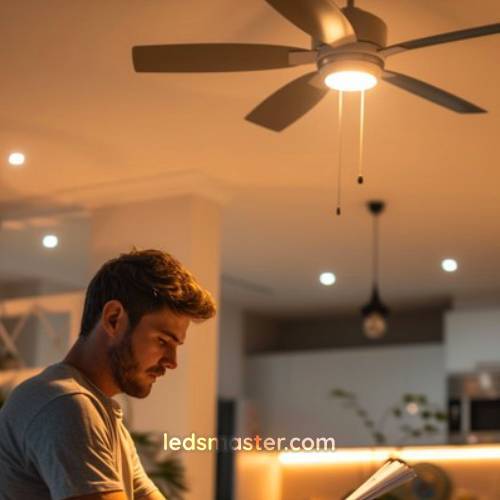 Ceiling fans equipped with built-in lights provide a dual-functionality solution for maintaining comfort and illumination in any room. Upgrading to LED bulbs not only enhances energy efficiency and longevity but also improves brightness and light quality. Opting for warm white bulbs preserves the classic look and feel of traditional incandescent lighting while reducing energy costs and environmental impact. Whether used for cooling airflow or ambient illumination, ceiling fan bulbs offer a practical and stylish lighting solution that enhances comfort and functionality in any space.
Ceiling fans equipped with built-in lights provide a dual-functionality solution for maintaining comfort and illumination in any room. Upgrading to LED bulbs not only enhances energy efficiency and longevity but also improves brightness and light quality. Opting for warm white bulbs preserves the classic look and feel of traditional incandescent lighting while reducing energy costs and environmental impact. Whether used for cooling airflow or ambient illumination, ceiling fan bulbs offer a practical and stylish lighting solution that enhances comfort and functionality in any space.
Floor Lamps
Floor lamps serve as versatile lighting fixtures that add both style and functionality to any room. Their adjustable spotlighting capabilities make them ideal for tasks such as reading or creating a cozy ambiance while lounging. Floor lamps provide an alternative to overhead lighting, allowing for customizable illumination that complements various activities and moods. Whether used to cast a soft, diffused glow for relaxation or to provide focused task lighting for productivity, floor lamps offer a flexible and elegant lighting solution that enhances the ambiance of any interior space.
Chandeliers
Chandeliers are iconic lighting fixtures that command attention and elevate the aesthetic of any room they adorn. Their ornate designs and sparkling crystals evoke a sense of grandeur and sophistication, creating a focal point that captivates the eye and garners admiration from visitors. Warm white bulbs enhance the inherent elegance of chandeliers, casting a soft, inviting glow that enhances the overall ambiance of the space. Whether used to illuminate formal dining areas, entryways, or living rooms, chandeliers add a touch of luxury and refinement to any interior setting, infusing it with timeless charm and visual allure.
Conclusion
The debate between warm white and cool white lights unveils significant insights into their impact on eye health. Warm white light, with its gentle and inviting glow reminiscent of sunlight, emerges as the preferable option for promoting visual comfort and reducing eye strain, particularly during activities like reading. By understanding the nuances of warm white light and its beneficial effects on eye health, individuals can make informed choices when selecting lighting options for their homes, workplaces, and other environments. Prioritizing warm white LED bulbs not only enhances the aesthetic appeal of interior spaces but also contributes to safeguarding long-term eye health in an era dominated by artificial illumination.

